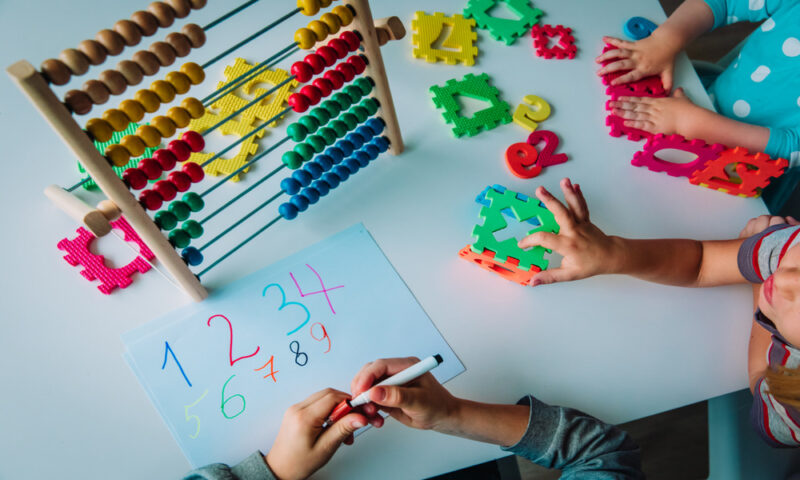Multiplication and Division
Unlocking Math Skills: A Visual Approach to Problem Solving from ORIGO Education
Mathematics is often perceived as a field of abstract concepts and numbers, but at its core, it’s a subject that comes alive through visualization and practical application.
At ORIGO Education, we emphasize the importance of visual learning strategies in understanding and solving mathematical problems, like the simple yet effective “Build-Down Strategy for Multiplication.” (Examples of this strategy can be found in The Book and Box of Fact Strategies: Multiplication and Division)
The Benefits of Visual Learning in Math:
- Enhances Understanding: Visual aids provide a concrete representation of abstract numbers, making it easier for students to grasp mathematical concepts.
- Builds Confidence: By breaking down problems into known facts and building from there, students feel more confident in their problem-solving skills.
- Promotes Strategic Thinking: This approach encourages students to think strategically, and use known facts to solve new problems.
Teaching the ORIGO Education Build-Down Strategy for Multiplication:
Imagine a scenario where a student is tasked with figuring out the total cost of three shirts. This problem, though straightforward, can be an excellent opportunity to apply visual learning strategies.
Step 1: Start with What You Know
The student begins by recalling a known fact: the multiplication of 20 by 3, which equals 60. This serves as a steppingstone for the following calculation.
Step 2: Build Down from the Known Fact
The student then considers a similar but slightly different problem: multiplying 19 by 3. By understanding that 19 is just 1 less than 20, the student quickly deduces that 19 by 3 must be 3 less than 60, arriving at 57.
Step 3: Visualizing Quantities
To further solidify this understanding, ORIGO Education recommends using visual aids, such as cards that depict quantities. For instance, a card illustrating ten sets of three and three sets of ten helps students see that this equals thirty.
Step 4: Applying the Strategy to Other Problems
The student is then challenged to apply this strategy to another problem: calculating nine times three. By visualizing this as just one row of three less than ten times three, the student quickly concludes that nine threes equal twenty-seven.
ORIGO Education’s approach to teaching math through visual strategies simplifies complex problems and makes learning more engaging and enjoyable. Using visual aids found in The Book and Box of Fact Strategies: Multiplication and Division and building down from known facts, students can develop a deeper understanding of mathematics and enhance their problem-solving skills.



